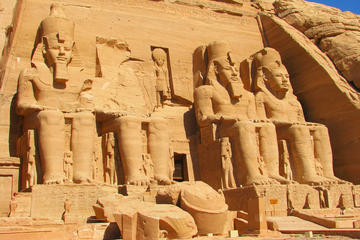Abu Simbel Temples
TIME : 2016/2/22 10:40:17

Abu Simbel Temples
Often referred to as the Temples of Ramses II, these two enormous sandstone structures built in 1255 BC at Abu Simbel in southern Egypt are only half of UNESCO’s Nubian Monuments site. Along with the other monument, the Sanctuary of Isis at Philae, these ancient structures were saved from rising Nile floodwaters when the construction of the Aswan High Dam formed the artificial Lake Nasser. Over a four-year period, from 1964-68, a UNESCO team cut the buildings into blocks and moved them to higher, safer ground – an operation that remains one of the world’s greatest feats of engineering.
Rediscovered by Swiss explorer Jean-Louis Burckhardt in 1813, these sand-covered temples weren’t fully accessible until 1817, via the laborious efforts of an excavation team led by Italian explorer Giovanni Battista Belzoni.
Both Temples of Ramses II are now open to the public, and together form one of the greatest tourist attractions in Egypt. The larger temple, dedicated to Egypt’s three then-major deities, Ra Harakhty, Ptah and Amun, features four large statues of the wildly egocentric Ramses II on its facade. The smaller temple is dedicated to the love goddess Hathor, with statues designed to look like Nefertari, the favorite of Ramses’ many wives.
